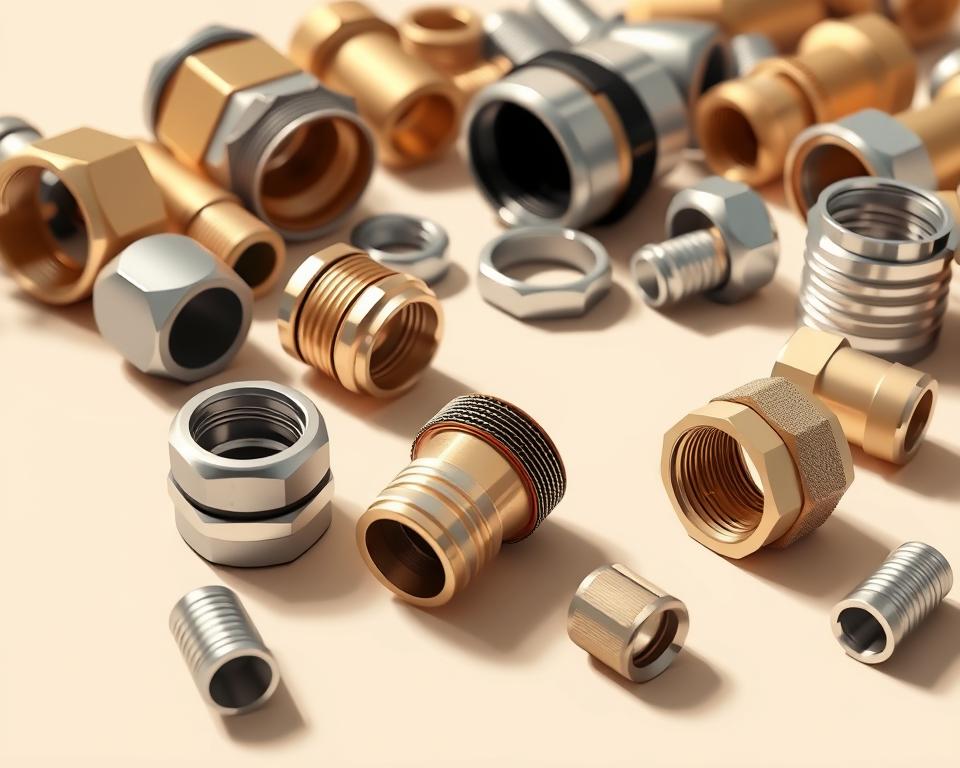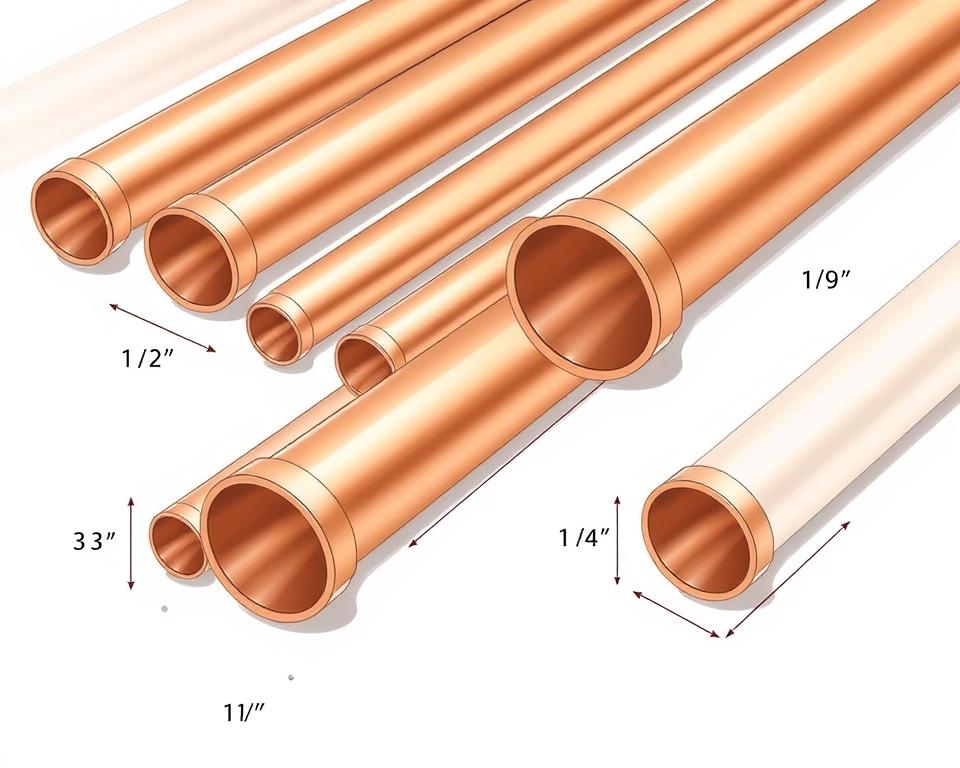Exploring Advancements in Metal 3D Printing Tech
The global market for 3D printed metal is forecasted to soar to $7.9 billion by 2028. This significant growth is fueled by notable improvements in alloy 3D printing tech. These innovations are redefining how we create intricate pieces and structures. Industries such as aviation and medical field are at the forefront, utilizing 3D printing metal to manufacture intricate, personalized components with unparalleled accuracy.
This article explores the state-of-the-art innovations driving this transformation. It uncovers how 3D printer metal printer is essentially changing fabrication techniques. By exploring these advancements, we learn into the future of production and the immense promise of this technology.
Comprehending Alloy 3D Printing
Metal 3D printing is transforming the production industry by enabling the fabrication of complicated metal components with unparalleled accuracy and flexibility. This technology facilitates for the incremental fabrication of intricate components, offering notable benefits over traditional techniques.
What is Metal 3D Printing?
Alloy 3D printing, or alloy 3D printing, uses various techniques to produce alloy parts. A 3D printer metal printing machine works by layering substance incrementally, directly from digital models. This method facilitates the fabrication of intricate shapes and customized designs.
The History of Metal 3D Printing
The development of metal 3D printing began in the late 1900s with pioneering designs of simple patterns. Over the decades, progress have broadened its capabilities, moving from simple designs to cutting-edge pieces. Currently, metal 3D printing is employed in aerospace, vehicle, and medicine fields, due to ongoing innovation.
Key Benefits of Metal 3D Printing
Employing a metal 3D printer provides various gains over conventional production methods. These include:
- Flexibility: The ability to produce complicated shapes and elaborate shapes that traditional processes cannot achieve.
- Minimized Material Loss: Metal 3D printing employs substance economically, reducing scrap during the manufacturing process.
- Personalization: Effortlessly produce personalized components, facilitating rapid prototyping and customized solutions across multiple applications.
- Velocity: Quicker fabrication durations from design to end product, simplifying the fabrication sequence.
These advantages make alloy 3D printing a appealing option for firms looking to improve and boost their fabrication capabilities.
The Progression of Metal 3D Printing Techniques
The progression of alloy 3D printing has been nothing short of exceptional, moving from rudimentary beginnings to the advanced techniques we now see. This path has concentrated on improving the sophistication of *metal 3D printed parts*, optimizing the application of *3D printing alloy powder*, and extending the reach of *metal 3D printing provider* providers.
Initial Developments
At its inception, metal 3D printing was characterized by trial techniques and a narrow selection of substances. The earliest major developments were selective laser melting and electron beam fusion. These technologies paved the way for more consistent production of metal pieces. Initial users utilized these technologies to produce complex shapes that conventional production methods couldn’t handle.
Modern Technological Trends
Nowadays, the developments in alloy 3D printing are reshaping manufacturing. The concentration is on accelerating production techniques, improving material traits, and reducing expenditures. The development of cutting-edge *3D printing metal powder* has enabled to create durable and exact *metal 3D printed components*. Furthermore, the increase of *metal 3D printing provider* companies has made cutting-edge production accessible to companies of all types.
Powder Bed Fusion Technologies in Alloy 3D Printing
Powder-Based Fusion methods have transformed alloy 3D printing, offering superior exactness and outstanding material integrity. This method employs a electron beam to fuse fine material particles, including the advanced metal powder bed fusion technique. It excels at producing complex forms that conventional production processes cannot attain.
Two primary PBF methods are notable: Laser Sintering and Laser-Based Sintering. Each delivers specific gains and is vital in sectors like aerospace, car, and healthcare fabrication.
- Laser Sintering: Using a intense laser, it completely fuses the material, producing pieces with outstanding mechanical properties.
- Laser-Based Sintering: This method utilizes a beam to precisely melt powder particles, ideal for producing parts with intricate internal geometries and excellent accuracy.
Laser-Based Sintering is preferred for complex patterns and swift prototype creation, ensuring productivity without sacrificing precision. Although Powder-Based Fusion technologies come with substantial prices and longer manufacturing rates, their exactness and substance optimization are propelling their use across fields.
Here is a comprehensive examination:
| Factor | SLM | Direct Metal Laser Sintering |
|---|---|---|
| Laser Specification | High-power laser | Laser beam |
| Material Efficiency | Excellent | Average to Superior |
| Application Flexibility | Highly flexible | Extremely versatile |
| Key Industries | Aerospace, Vehicle, Medical | Aerospace, Car, Healthcare |
| Standard Materials | Aluminum, Titanium, Stainless Steel | Aluminium, Ti, Stainless Steel |
Both metal powder bed fusion techniques are developing, offering increased efficiency and substance potential. As tech advances, the potential of PBF in metal 3D printing is set to expand, driving progress across multiple industries.
Applications of Selective Laser Melting
Selective Laser Melting has changed the alloy 3D printing sector, offering unmatched exactness and versatility. It allows the creation of complex constructions with ease. This segment delves into how Selective Laser Melting is used across various sectors, demonstrating its substantial influence.
Selective Laser Melting in Aviation Sector
In space, Selective Laser Melting is vital for creating intricate engine components such as turbine components and fuel nozzles. It facilitates for significant weight savings while preserving structural integrity. This results in improved and less heavy aircraft.
By improving fuel economy and lowering emissions, Selective Laser Melting aligns with environmental objectives in the aviation field.
Uses in Medicine of SLM
The medicine field significantly gains from SLM, particularly in producing tailored implants and prosthetics. Healthcare providers can now develop devices personalized to particular people, ensuring a improved fit and performance. This leads to enhanced patient outcomes.
Tailored prosthetics, such as those for orthopedic and oral needs, are produced to match the specific structure of each individual. This highlights the versatility of metal 3D printing in enhancing medicine.
| Sector | Uses | Benefits |
|---|---|---|
| Aerospace | Engine pieces, rotor blades, fuel nozzles | Weight savings, increased energy efficiency, better functionality |
| Medical | Custom implants, replacement parts | Personalized patient care, enhanced comfort and functionality, decreased recovery time |
Gains of Electron Beam Melting
EBM is a cutting-edge process in alloy 3D printing. It uses a intense electron beam to bind metal powder in a vacuum environment. This method delivers several key advantages.
Minimizing Oxidative Degradation:
One notable advantage of Electron Beam Melting is its operation in a vacuum, which significantly reduces material oxidation. This is essential for alloys like Titan and its compounds. These are vital in aerospace and healthcare implants due to their susceptibility.
Improved Material Properties:
Operating in a vacuum environment not only keeps the material uncontaminated but also enhances its physical characteristics. Electron Beam Melting-produced parts often display better structural strength and endurance. These characteristics are vital for implementations under high stress.
Complex Design Capabilities:
Electron Beam Melting is proficient in producing complex layouts and complicated forms. The exactness of the beam of electrons enables detailed and personalized parts. This is exceeding what classical fabrication can accomplish.
| Element | Advantage |
|---|---|
| Oxidation Reduction | Minimized oxidation because of vacuum environment |
| Alloy Purity | Improved because of vacuum environment |
| Physical Characteristics | Enhanced structural strength and fatigue resistance |
| Design Versatility | Ability to produce detailed and personalized components |
Electron Beam Fusion’s employment of beams of electrons in a vacuum environment results in high-quality alloy components. These parts have reduced oxidative degradation and superior mechanical properties. This turns Electron Beam Fusion essential in industries needing accuracy and endurance, such as aerospace and medical device production.
Innovative Laser-Based Sintering
DMLS has transformed the metal 3D printing industry. It uses a high-powered light source to bind metal powder sequentially, producing complex components without traditional molds. This technique is exceptional for its accuracy and efficiency.
Materials Needed for DMLS
For Direct Metal Laser Sintering, alloys must meet particular requirements for maximum operation. Key materials include Al, Ti, alloy steel, and cobalt-chrome compounds. These materials demand uniform particle size, enhanced temperature traits, and extreme heat resistance to tolerate the strong laser energy.
- Uniform Powder: The alloy grains must be consistently shaped and formed for exact sintering.
- Thermal Properties: Substances must effectively conduct and manage heat to melt and harden properly.
- Elevated Melting Temperatures: Ensuring integrity during the fusion process prevents imperfections.
DMLS vs. Traditional Manufacturing
When comparing Direct Metal Laser Sintering to classical manufacturing, Direct Metal Laser Sintering offers clear gains. It can produce intricate shapes, minimize material loss, and substantially reduce fabrication periods. For detailed patterns and samples, Direct Metal Laser Sintering delivers unequaled versatility and exactness.
| Aspect | DMLS | Conventional Manufacturing |
|---|---|---|
| Complicated Forms | Superior | Limited |
| Waste | Low | Substantial |
| Production Time | Short | Extended |
| Customization | Highly Flexible | Restricted |
By adopting Direct Metal Laser Sintering, sectors can achieve significant efficiencies and advancements in product creation and manufacturing. This innovation is setting the stage for a modern epoch of advancement.
Prospects of Energy-Based Deposition
Looking forward, Direct Energy Deposition is set to transform fabrication. Its ability for quick layering and the capability to improve or restore parts signifies a substantial transformation. This innovation is expected to deeply affect industries like large-scale manufacturing and power.
Direct Energy Deposition enables the repair of components that have degraded, thus lengthening the lifespan of crucial machinery. This is particularly advantageous in fields relying on large machinery, where replacement components can be both slow and pricey.
The adaptability of Energy-Based Deposition in handling diverse metals makes it a prime solution for tailored production solutions. It provides accuracy and productivity to the procedure, creating innovative routes in product innovation and development.
Here’s a comprehensive examination of the benefits Direct Energy Deposition delivers in various industries:
| Field | Advantages of Direct Energy Deposition |
|---|---|
| Industrial Production | Rapid material placement, repair and refurbishment capabilities |
| Power | Upkeep, prolonged component durability, and cost savings |
| Aerospace | Tailored production, reduced-weight parts, exactness |
| Healthcare | Superior exactness, medically safe substances, swift prototype creation |
In summary, the development in DED signals a bright future. It offers to increase production effectiveness and enhance resource efficiency, maintaining Energy-Based Deposition at the cutting edge of production technology.
Metal 3D Printing Innovations in Car Industry
Alloy 3D printing is transforming the automotive field, offering new innovations to vehicle design and fabrication processes. This tech enables the manufacturing of tailored parts, redefining conventional fabrication methods.
Effects on Car Design
Car creators now utilize metal 3D printing to craft detailed and reduced-weight components. This adaptability allows for the production of unique pieces that enhance vehicle operation and aesthetics. Importantly, complex geometries that were once impractical or high-priced are now attainable.
Enhancements in Production Efficiency
3D printing tech substantially improves manufacturing efficiency in the car field. It lowers the demand for multiple fabrication phases, optimizing production lines and minimizing scrap and production durations. Furthermore, rapid prototyping is facilitated, permitting speedier versions and faster product launch for new models.
The benefits of 3D printing in automotive parts are evident: boosted accuracy and lowered substance utilization. These gains result in significant expense reductions and operational efficiency across the field.
Jetting Process: A Pivotal Leap in Metal Fabrication
Jetting Process indicates a pivotal leap in alloy 3D additive manufacturing, providing multiple gains for industrial use. This process, which deposits a 3D additive alloy binder sequentially, substantially reduces production time over conventional techniques. Its economic efficiency is remarkable, appealing to producers seeking cut expenditures without forgoing accuracy.
Yet, it’s important to acknowledge certain limitations. Beginning components may show lower compactness and resilience. To alleviate this, secondary processes like sintering can be used. These procedures improve material characteristics, aligning them with those achievable through other metal 3D fabrication techniques.
Regardless of these trade-offs, Jetting Process’s advantages, especially in terms of quickness and cost, are notable. By adopting a 3D additive metal binding agent into their methods, firms can achieve considerable gains. This places them at the forefront of fabrication advancement.
Growth with Large Format Metal 3D Printers
Novel large-scale metal 3D printing machines are transforming the manufacturing of complicated, big components across sectors. These printing devices deliver substantial promise but also present distinct hurdles. Addressing these hurdles is crucial to fully exploit their capabilities.
Obstacles in Large-Scale Printing
One significant hurdle with large-scale metal 3D printing machines is keeping accuracy over massive spaces. As fabricated pieces grow in size, ensuring uniform quality and stability becomes more challenging. Prolonged fabrication periods for big items also introduce factors that challenge the production process.
- Precision and Accuracy: Guaranteeing accuracy over more extensive areas is challenging, often demanding advanced tuning and monitoring techniques.
- Printing Velocity: Bigger structures take longer to print, which raises the chance of errors and the demand for enhanced quality control measures.
- Material Processing: Processing the extensive amounts of alloy particles or feedstock demanded for these prints brings organizational obstacles in material warehousing and handling.
Fields Advantaged by Big Printing
Various sectors will significantly profit from large-scale metal 3D printing devices, particularly those requiring massive, complex components. The potential to 3D print massive structures on-demand offers substantial logistical and cost benefits.
| Industry | Gains | Applications |
|---|---|---|
| Construction | Decreased fabrication periods, Customization | Building components, Building frameworks |
| Shipbuilding | In-situ production, Expense savings | Ship bodies, Drive elements |
| Oil & Gas | Robust piece manufacturing, Reduced downtime | Pipeline connections, Drilling equipment |
These illustrations demonstrate the broad possibilities implementations of large-scale alloy 3D printers across multiple industries. As innovation advances, it will be fascinating to observe how 3D printing big components will additionally transform these industries.
Breakthroughs in Substances in Metal 3D Fabrication
The metal 3D additive manufacturing industry is evolving rapidly, driven by advancements in materials. New material granules and combinations are driving this development, greatly improving the innovation’s potentials and implementations. Global companies are channeling capital into research and development to discover novel substances for diverse industrial uses.
A major advancement in 3D printing metal development is the introduction of unique alloy combinations. These materials boast augmented durability, temperature resistance, and resistance to corrosion. Such breakthroughs are essential for fields like aviation, vehicle, and healthcare, where robustness and performance are critical. Furthermore, customizing these alloys for specific needs offers unparalleled flexibility and efficiency in production.
To showcase the scope and advantages of breakthroughs in substances in alloy 3D printing, examine the comparison below, which details major developments and their implementations:
| Material Innovation | Notable Traits | Commercial Uses |
|---|---|---|
| Ti Alloys | Low weight, high strength, corrosion resistance | Aviation, medical implants |
| Nickel Superalloys | Heat tolerance, robustness | Energy production, car, aerospace |
| Aluminium-Based Compounds | Lightweight, anti-corrosion properties | Automotive, aviation |
| Steel Mixtures | Robustness, toughness, oxidation resistance | Healthcare equipment, food production, car |
These cases demonstrate the major influences of advancements in materials on 3D printing metal progress. As these advancements progress, they are likely to change conventional fabrication, enabling intricate forms and customized material properties.
Personalized Alloy Components: Revolutionizing Production
The ability to create tailored metal parts through 3D fabrication is revolutionizing production. This technology provides unparalleled 3D printing customization capabilities. It facilitates sectors to produce intricate designs and customized parts easily.
Customization Capabilities
3D additive manufacturing personalization delivers a notable advantage by facilitating parts tailored to specific demands. Unlike traditional processes, 3D printing enables rapid prototyping and changes. This versatility is vital for industries demanding exactness and individuality in their parts.
- Creativity: 3D fabrication facilitates complex geometries and detailed designs that are hard to accomplish with classical techniques.
- Swift Prototype Creation: Facilitates swift movement from concept to sample, producing quicker revisions and a reduced release period.
- Economic Fabrication: Cuts material loss and substance expenses by manufacturing only what is required.
Sectors Employing Personalized Alloy Components
Several fields are leveraging tailored metal pieces through 3D printing customization to boost their outcomes and methods:
- Healthcare: Custom alloy components are utilized to create patient-specific prosthetics and prosthetics, enhancing compatibility and performance.
- Car: Manufacturers employ 3D printing to create reduced-weight, durable parts that boost auto efficiency and fuel economy.
- Consumer Items: Businesses can manufacture bespoke items tailored to particular tastes, delivering a unique customer benefit to customers.
The adoption of tailored metal pieces and 3D printing customization is driving several fields into a modern epoch of manufacturing innovation and effectiveness.
Economic Impacts of Alloy 3D Printing Service Offerings
Metal 3D printing offerings are revolutionizing manufacturing with their flexibility and cost-efficiency. They greatly cut decrease capital and manufacturing periods, typical in conventional production. This allows for the quick and economic production of intricate alloy components, hastening innovation cycles.
One significant benefit of alloy 3D fabrication is its minimized waste. Traditional processes often result in notable waste. In comparison, 3D printing adds substance layer by layer, cutting down on scrap. This not only reduces fabrication expenditures but also has a favorable green benefit.
Expense reductions are another benefit, thanks to the potential to create pieces on demand. This approach gets rid of the need for big warehouses, freeing up capital for other investments. It’s especially beneficial for industries requiring custom or limited-run components, like aviation and medical sectors.
The financial influence of alloy 3D additive manufacturing also involves employment. As demand for these solutions expands, so does the need for trained workers. These roles encompass operating 3D printing devices, processing post-processing, and supervision. This increase boosts the job market and promotes economic development.
These advantages are evident when juxtaposing classical production to metal 3D fabrication:
| Element | Conventional Fabrication | Metal Fabrication |
|---|---|---|
| Initial Investment | Substantial | Reduced |
| Manufacturing Period | Extended | Rapid |
| Material Loss | High | Minimal |
| Personalization | Constrained | High |
The financial influence of metal 3D printing is also observed in its market edge. Firms employing these services can quickly launch goods to consumers, responding swiftly to market needs and developments. This adaptability is essential in today’s rapidly changing marketplace.
The rise of metal 3D additive manufacturing services is reshaping financial structures, facilitating more effective, expense-efficient, and progressive manufacturing methods. As this innovation advances, its financial influence will set to grow, additionally reshaping manufacturing techniques and economic trends.
Green Practices in Alloy 3D Printing
The move towards sustainable practices is crucial in the current fast-paced industrial world. Metal additive manufacturing champions this change, offering approaches that greatly reduce scrap and fuel usage. It enables a more productive use of resources, from planning to item disposal.
One major benefit of metal fabrication is its minimized waste. Conventional techniques often result in notable scrap, removing surplus substance to form the finished item. Eco-friendly fabrication, however, creates components layer by layer, employing only what’s required. This method preserves substances and turns the manufacturing method cleaner, with reduced green effect.
Energy efficiency is crucial for fabricators aiming to adopt eco-friendly practices. Metal additive manufacturing techniques are often more power-saving than classical methods. The exactness of eco-friendly fabrication minimizes the demand for numerous production steps, thus lowering power consumption. Additionally, in-situ manufacturing with metal 3D printers can lower the environmental impact from transportation and transport, boosting environmental sustainability.
Conclusively, metal fabrication is setting the stage for a sustainable production phase. By embracing sustainable 3D printing, fields can advance while protecting the environment. As this innovation evolves, it offers even more effectiveness and a smaller environmental footprint. This underlines the need for these methods in current fabrication.



